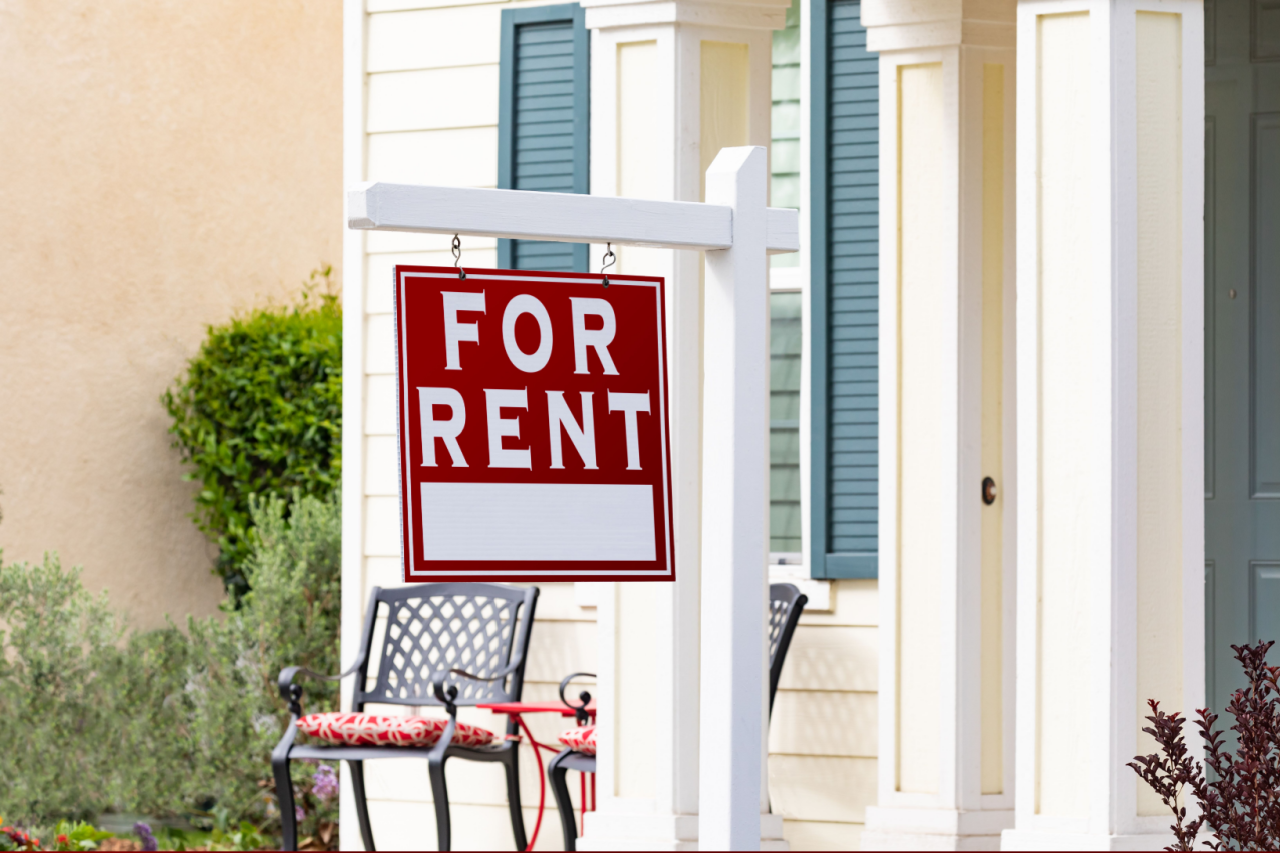Home·Property Management·How Do High Vacancy Rates Impact the Financing of Multifamily Properties?
Vacancy rates directly impact cash flow and lender confidence.

How Do High Vacancy Rates Impact the Financing of Multifamily Properties?
High vacancy rates in multifamily properties can seriously hurt financing options. For real estate investors, vacancy rates are more than just numbers—they directly impact cash flow and lender confidence.
When too many units sit empty, securing favorable loans becomes a challenge, limiting your ability to grow or stabilize your investment.
Understanding the link between occupancy levels and financing options can empower you to make smarter decisions. Learn how to navigate this issue and keep your multifamily property financially strong.
Key Takeaways
-
High vacancy rates can make it hard to get good loans for multifamily properties
-
Empty units mean less income, which worries lenders about loan repayment
-
Keeping occupancy high is crucial for maintaining good financing options
Understanding the Impact of Vacancy Rates on Multifamily Properties
Vacancy rates play a crucial role in the success of multifamily properties. They affect everything from cash flow to financing options. Let’s explore how these rates shape the multifamily real estate landscape. Multifamily vacancy rates explained are significant for real estate investors as they impact rental income and investment returns.
Defining Vacancy Rates and Their Significance
Vacancy rates are the percentage of unoccupied units in a multifamily property. You calculate vacancy rate by dividing the number of empty units by the total number of units. A low vacancy rate often means higher rental income and better cash flow.
Why does this matter? When your property dips below 90% occupancy, it’s labeled “unstabilized.” This label can close doors to prime financing options from big players like Fannie Mae and Freddie Mac.
Keeping an eye on your vacancy rate helps you gauge your property’s health. Analyzing average multifamily vacancy involves understanding both national trends and local data. While national averages provide a general overview, insights into local markets are crucial for understanding the impact of economic conditions on different property types. It’s a key indicator of your investment’s performance and the local rental market’s strength.
The Economics of High Vacancy Rates
High vacancy rates can put a serious dent in your wallet. Empty units mean no rent coming in, but you still have to cover expenses. This gap can quickly eat into your profits.
Understanding the factors influencing multifamily vacancy is crucial for maintaining occupancy levels. Economic conditions often drive vacancy rates. In a downturn, tenants might struggle to pay rent or look for cheaper options. This can lead to higher turnover and longer periods between tenants. Additionally, the location of your property and effective property management practices play significant roles in determining vacancy rates.
High vacancies can also trigger a nasty cycle. Less income might mean cutting back on maintenance or improvements. This can make your property less attractive, leading to even more vacancies.
Operational Challenges and Property Management
Managing a property with high vacancies is no walk in the park. You’ll face unique challenges that can test your skills and patience.
Marketing becomes crucial. You need to attract new tenants while keeping current ones happy. Happy tenants are more likely to renew their leases, which helps maintain a low vacancy rate. This might mean offering incentives or upgrading units to stay competitive. Providing excellent customer service and promptly addressing tenant requests are key strategies to achieve this satisfaction.
Efficient property management is key. You’ll need to balance cost-cutting with maintaining quality. Neglecting maintenance to save money can backfire, driving away potential tenants. Responding quickly to maintenance requests is essential for enhancing tenant retention and ensuring they are satisfied with their living conditions.
Using property management software can help. It can streamline operations and give you insights to make smart decisions. Remember, every empty unit is a chance to improve your property and attract great tenants.
Get a Free Multifamily Loan Quote
Access Non-Recourse, 10+ Year Fixed, 30-Year Amortization
How Do High Vacancy Rates Impact the Financing of Multifamily Properties?
High vacancy rates in multifamily properties can make financing much harder to get. When too many units sit empty, lenders see it as risky.
You might face some big challenges if your building’s occupancy dips below 90%. At that point, many lenders consider the property “unstabilized.” This label can shut you out from the best financing options. As a property owner, understanding and managing vacancy rates is crucial. High vacancy rates not only affect financing but also gauge your competitive standing in the market. They serve as an economic indicator of the overall health of your rental property.
Fannie Mae and Freddie Mac, two major players in multifamily lending, often won’t touch properties with high vacancies. They prefer buildings that are nearly full. If you can’t get their loans, you’re missing out on some of the best rates and terms in the business.
High vacancies can also lead to:
-
Higher interest rates
-
Shorter loan terms
-
Larger down payments
-
More hoops to jump through
Lenders might ask for extra cash reserves too. They want to make sure you can cover expenses if units stay empty.
You’ll likely need to look beyond traditional lenders. Private money or bridge loans could be options, but they often come with steeper costs.
Fixing high vacancy rates should be your top priority. It’s not just about filling units – it’s about keeping your financing options open. The stronger your occupancy, the more choices you’ll have when it comes time to get a loan.
What Does a High Vacancy Rate Indicate About a Rental Market?
A high rental vacancy rate in a rental market often signals an oversupply of rental units or weak demand from tenants. This key metric, used to assess the health of the residential real estate market, can be derived from data provided by the U.S. Census Bureau.
High vacancy rates can result from factors like economic downturns, unattractive property features, or poor location. For investors, it’s a red flag that might suggest lower rental income potential and increased competition to attract tenants. Understanding rental vacancy rates can benefit landlords by informing rental pricing and management strategies.
Strategies for Mitigating Financial Risks
High vacancy rates can hurt your multifamily property’s finances. Let’s explore some ways to protect your investment and keep your cash flow strong.
Investment and Rental Pricing Strategies
You need to be smart about your investment approach. Start by researching the local market. Look at vacancy trends in the area, as high vacancy rates can indicate an oversupply of rental properties or weak demand. This helps you set realistic expectations.
Consider adjusting your rental prices. If vacancies are high, you might need to lower rent temporarily, which can attract more tenants and boost occupancy. But be careful not to go too low – you still need to cover your costs.
Think about offering short-term lease options. This can appeal to renters who aren’t ready for long-term commitments. It might help fill units faster.
Enhancing Property Value and Appeal
Improve your property to stand out from the competition. Upgrade common areas like lobbies or fitness centers. Add new amenities that tenants want. This can justify higher rents and attract more interest, especially from quality tenants who are willing to pay premium prices for better living environments.
Fix any maintenance issues quickly. A well-kept property is more appealing to potential renters and helps attract quality tenants. It also helps retain current tenants, reducing turnover and associated financial strain.
Consider renovating older units. Modern appliances and fresh paint can make a big difference. These improvements can lead to higher rents and fewer vacancies, maximizing property value.
Market your property effectively. Use high-quality photos and virtual tours. Highlight your property’s best features and location benefits. Good marketing can help fill units faster.
Frequently Asked Questions About High Vacancy and Financing in Multifamily
How do elevated vacancy rates affect the ability to secure loans for multifamily housing investments?
Elevated vacancy rates make it harder to get loans for multifamily properties. When occupancy drops below 90%, many lenders see the property as unstable. This can lead to higher interest rates, stricter terms, or loan denial. You may need to look at alternative financing options if vacancies are high.
What are the implications of high vacancy rates on the value of multifamily residential properties?
High vacancy rates lower the value of multifamily properties. They reduce income and cash flow, which investors use to determine property worth. You’ll likely see a drop in appraised value and market price. This can make it tough to sell or refinance the property at a good price.
How might landlords and property management companies mitigate the financial risks associated with high vacancy rates?
You can reduce vacancy risks by offering move-in specials, upgrading units, or adjusting rent prices. Improving amenities can also help attract tenants. Consider flexible lease terms or targeting different renter groups. Building a strong marketing plan and maintaining good tenant relationships are key.
Focusing on tenant retention is crucial for landlords. Satisfied tenants are more likely to renew their leases, thus reducing vacancy rates. Enhance tenant retention by providing excellent customer service, swift maintenance responses, and fostering a sense of community. Utilizing efficient tenant screening tools can also ensure a solid tenant base.
In what ways do vacancy rates influence the capitalization rate and overall investment yield of multifamily properties?
Vacancy rates directly impact cap rates and investment yields. Higher vacancies mean less income, which lowers the net operating income (NOI). This results in a lower cap rate, making the property less attractive to investors. You’ll see reduced cash flow and potentially lower returns on your investment.
What strategies can investors employ to offset the financial impact of high vacancy rates in multifamily properties?
You can offset vacancy impacts by cutting operating costs, improving efficiency, or adding revenue streams like laundry or parking fees. Consider short-term rentals to fill gaps. Enhance your marketing efforts and tenant screening to find quality, long-term renters. Additionally, focus on reducing tenant turnover by implementing tenant satisfaction and retention efforts. This includes maintaining open communication, addressing maintenance issues promptly, and offering lease renewal incentives to ensure consistent occupancy and a dynamic, profitable rental property.
Sustained high vacancies can limit your refinancing options. Lenders may view your property as risky, leading to less favorable terms or even refusal. You might face higher interest rates or need to put up additional collateral. It’s crucial to address vacancy issues before seeking refinancing.
Vacancies Impact on Financing Multifamily Properties – Conclusion
High vacancy rates can create hurdles for multifamily property financing, from higher interest rates to fewer loan options. Addressing these challenges requires proactive strategies like improving occupancy, adjusting rental pricing, and enhancing property appeal.
By maintaining strong occupancy levels, you not only protect cash flow but also preserve access to the best financing options.
Source: Willowdale Equity
Get AAOA's Newsletter
Property Management News Categories
- Affordable Housing
- Collections
- COVID-19
- Eviction
- Fair Housing
- Financing
- Going Green
- Government
- Investing
- Landlord Forms
- Landlord Quick Tips
- Latest News
- Leasing
- Legal Brief
- Legal News
- Maintenance
- Make Extra Money
- Marketing Vacant Units
- Property Management
- Real Estate Investing
- Real Estate Trends
- Remodel and Repair
- Rent Magazine
- Security Deposit Alternatives
- Social Media
- Tax Tips
- Technology
- Tenant Screening
- Uncategorized















 Accessibility
Accessibility